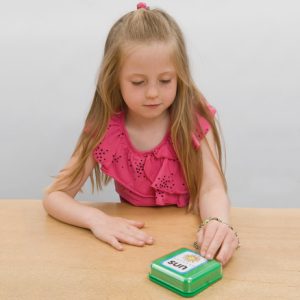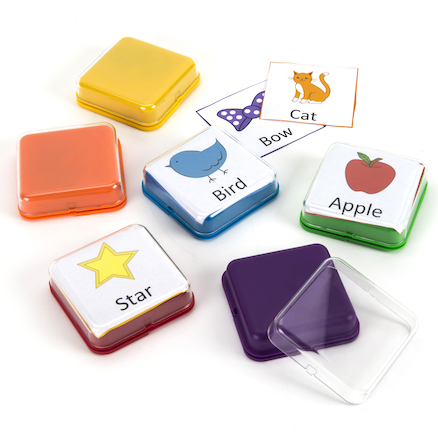Big Point Recordable Buttons
In this blog Andrew Whitehouse shares his thoughts on Big Point Recordable Buttons.
People who know me well will tell you that I tend to get very excited about colour coding, and alternative modes of recording, so guess what…
TTS have given me a resource that is both of these things and much more. So, let’s have a look at some exciting uses for Big Point Recordable Buttons shall we.
Regulating behaviour and emotions:
Use Big Point Recordable Buttons to regulate behaviour and emotions.
With most children, somewhere between happy and sad is the moment when the situation can be saved. I call it “fizzing”. If we can identify this moment, there may well be an opportunity to intervene before the child becomes too distressed, and in many cases unresponsive to interventions. In order to achieve this, we would normally use some form of visual communication tool such as three emojis: happy, just ok, angry. We might also use a lanyard with red, yellow, and green flash cards. One of these can then be shown to a carer or professional as needed and appropriate. But of course, to respond to this, the adult needs to be looking in the right direction.
The beauty of Big Point Recordable Button is that there is the additional element of auditory communication. The child can press the button, and the adult can hear it, as well as see it. This of course significantly increases response time. Not only this, but there is also the additional element of the kinaesthetic act of pressing the buttons, in particular the red one. In a state of heightened emotion, what could be more cathartic than pressing a big red button… forcibly if you feel that way!
Maths:
Big Point Recordable Buttons to support Maths.
I work a lot with Dyscalculia students and have a system of four Cs to support those with the condition. These are as follows:
Concept, Context, Concrete, Colour
Maths is conceptual. It can of course be very logical, but it can also be extremely confusing to understand that 5 + 5 = 10, and 5 x 5 = 25. By simply changing the + to x i.e. turning the symbol sideways the answer has completely changed. To further confuse things, mathematical language is vast. Indeed, for a simple thing like addition, we have a range of vocabulary such as:
- Add
- Plus
- Sum of
- Altogether
- Increased by, etc.
However, if we were to use colour coded questions and answers as below:
- All addition: red
- All subtraction: blue
- All multiplication: green
- All division yellowThen we can identify the actions needed based on the colour, rather than having to decipher complicated language and understand the concept despite the range of (potentially) confusing variables in vocabulary. So therefore, we can use concrete resources like the Big Point Recordable buttons to, for example, record questions on the appropriately coloured buttons and write the answer on them in a drywipe. Thus, putting the question into a context. In this case, every question is framed in a logical colour coded context. This, in conjunction with the kinaesthetic needs of most children means that the concrete nature of these buttons makes them an indispensable tool for multi modal learning.These are just some of the ways Big Point Recordable Buttons can be used. I will, most definitely find many more uses for this resource!
-

-









